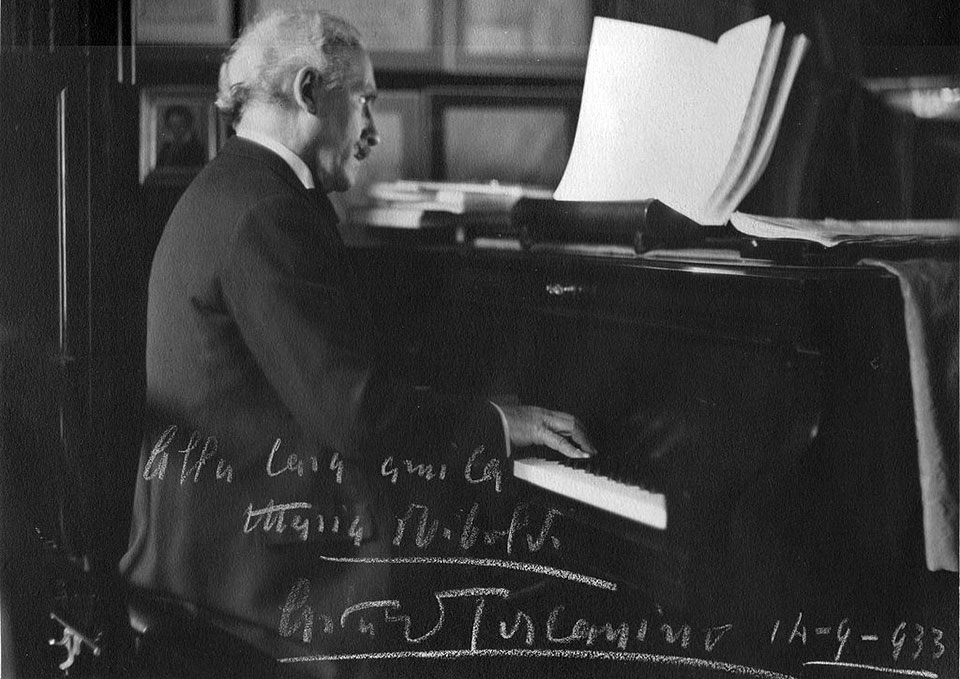
Scholar Jonathan Rosenberg’s new book Dangerous Melodies: Classical Music in America from the Great War through the Cold War has a misleading title. He focuses on controversies during three major episodes in global history—the Great War (World War I), World War II, and the Cold War of the 1940s-1960s (he only sketchily carries the story much beyond that), but largely ignores domestic political issues. And without ever saying as much, he seems to define “classical music” as for the most part European music: American concert or theater music by serious composers is treated incidentally here or not at all, with the single exception of Aaron Copland. Practically speaking, since he concentrates on the two biggest wars of the 20th century, that means German music (Richard Wagner in particular) and Soviet music (almost exclusively Dimitri Shostakovich).
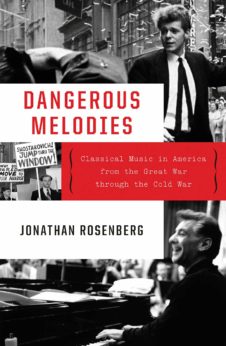 Rosenberg is a professor of 20th-century American history at Hunter College and the Graduate Center of the City University of New York. The one overriding theme Rosenberg chooses to explore is “an age when classical music occupied a prominent place not only in the nation’s cultural life, but in its political life, as well.” By the end of his book, he laments—and indeed this is his closing sentence—“However difficult to imagine, across those eventful decades, countless people embraced the idea that what happened in the concert hall and the opera house was inseparable from the destiny of the United States and the well-being of the American people.”
Rosenberg is a professor of 20th-century American history at Hunter College and the Graduate Center of the City University of New York. The one overriding theme Rosenberg chooses to explore is “an age when classical music occupied a prominent place not only in the nation’s cultural life, but in its political life, as well.” By the end of his book, he laments—and indeed this is his closing sentence—“However difficult to imagine, across those eventful decades, countless people embraced the idea that what happened in the concert hall and the opera house was inseparable from the destiny of the United States and the well-being of the American people.”
Within that subject, the principal division occurred between the musical “nationalists” and the “universalists.” The former believed that culture is primarily an expression of national will and purpose, whereas the latter just as fervently believed that great music is the inheritance of all humanity and does not belong only to the nation of its creators. During the inflamed passions against the Kaiser’s “Huns” during WWI, when Wagner’s music was banned from the concert hall as an offensive expression of Teutonic superiority, did that mean, too, the banning of Wagner’s fellow Germans, Bach, Haydn, Mozart, Beethoven, Schubert, Brahms, as well as more recent, frivolous fare in the form of light opera?
The author informs his readers in granular detail about important figures in music, some more distinctly remembered than others, whose stories illustrate these social conflicts: Johanna Gadski, Karl Muck, Ernst Kunwald, Eugène Ysaÿe, Walter Damrosch, Wilhelm Furtwängler, Arturo Toscanini, Kirsten Flagstad, Herbert von Karajan, Walter Gieseking, and others.
Where is the American music?
With all the anti-German agitation during the Great War—and a more nuanced anti-Nazi stance during WWII—curiously we learn nothing in Rosenberg’s study about any efforts to program more music by American composers other than patriotic songs. There were certainly some accomplished composers on our shores, the appearances of whose works on concert programs were almost freakish rarities. That would certainly have been an apt topic for a monograph on “Classical Music in America” to address. For one thing, it helps account for the more economical means American composers adopted in the post-WWI era in contrast to and in rebellion against the overblown, ecstatic and escapist Romanticism of Wagner.
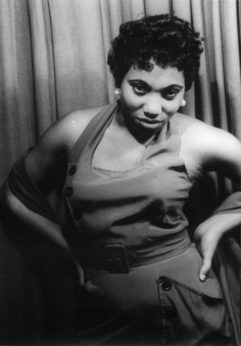
Rosenberg might also have paid attention to the introduction of jazz and popular influences in American music during this period, which was also an inherently political struggle, with a heavy racial component, against the plushly upholstered esthetic of the big European orchestral tradition. As an example of Rosenberg’s negligence in this regard, the name of George Gershwin, arguably America’s most popular composer who besides his musical theatre works also produced concert works of wide appeal, is only mentioned in the book once in passing, and even then only by his last name, as an American composer one of whose pieces (unidentified) the New York Philharmonic performed on a visit to Pyongyang, North Korea, in 2008. Shockingly, the U.S.-sponsored Cold War propaganda tour of the Gershwins’ opera Porgy and Bess to the USSR in 1956, featuring the up-and-coming soprano phenomenon Leontyne Price, goes totally unmentioned.
If the anti-German campaign elicited feelings of foreign subversives and influences, the author might have related that to the contemporary fear of foreign-born radicals. Averse as he is to looking inward upon the domestic aspects of the war fever, Rosenberg neglects to mention the violent suppression of free speech, including anti-war agitation, that characterized the government’s response to anarchists and socialists, and soon “Bolsheviks” in wartime and in the immediate post-war years of the first Red Scare. The long imprisonment of socialist Eugene V. Debs is unmentioned.
World War II was different
Jumping ahead to the pre-WWII period, Rosenberg makes no reference to the pro-fascist movement in the U.S. on the part of the German-American Bund and other organizations, to ascertain their connections to the music world. Did they sponsor or promote pro-Nazi performers and composers? Did they try to turn the classical German composers’ oeuvre into precursors of Nazi ideology? Did they campaign against Jewish performers? He doesn’t even mention the Daughters of the American Revolution refusing to allow the great African-American mezzo Marian Anderson to sing in their Constitution Hall in 1939.
To its credit, American sentiment turned in this time not against German music as such, but against Nazi ideology. Rosenberg slides over this question, but Americans, in general, did not feel so generously toward the Japanese, however, who were indeed racially profiled. It is profoundly shocking that he does not even mention the concentration camps set up for Japanese Americans, many of them U.S. citizens, for the duration of the war. As for Italian music, pre-fascist opera composers such as Verdi and Puccini were exempt from censorship (although the anti-American, pro-Japanese Madama Butterfly was put on hold until after the war), yet the renowned composer Ottorino Respighi (The Pines of Rome and The Fountains of Rome), who lived and worked in Mussolini’s Italy until his death in 1936, apparently was not banned. He gets one much later, unrelated mention.
In another way, American concert and opera programmers might have dramatically responded to fascism by performing the works of “degenerate” composers banned by the Nazis, people such as Felix Mendelssohn, Gustav Mahler, Paul Hindemith, Kurt Weill, Arnold Schoenberg, Franz Schreker, Erich Korngold, Alexander von Zemlinksy and others, some of them Jewish and some not, but there is no mention of any such attempts. Kurt Weill, anti-fascist composer of Threepenny Opera, that took Europe by storm in the period from 1928 to 1933, is never named. Nor is Hanns Eisler, frequent collaborator with Bertolt Brecht (also never mentioned), both of whom were forced to leave the U.S. during the post-war Second Red Scare. Weill had also made his way to the U.S. as a refugee and became a prolific Broadway composer, with significant socially conscious scores such as those to Knickerbocker Holiday, Love Life, Street Scene and Lost in the Stars. Eisler established himself (as did Korngold) in Hollywood, writing award-winning film scores, as well as a politically relevant song cycle, Hollywood Elegies.
How do we view democracy?
It could often be problematic, however, determining what level of accountability certain conductors or singers shared. Post-war “clearances” by U.S. investigators of artists who remained in Germany as active professionals throughout the war did not convince everyone. Many on the left, in particular, refused to welcome conductor Wilhelm Furtwängler back into the fold, suspecting that the post-war politics of reintegrating West Germany into the Western orbit had much to do with his “rehabilitation,” just as Nazi atomic scientists were recruited to work in America, and just as pro-fascist nationalists from Eastern Europe could enter the country legitimately with their passionate anti-communist credentials. (The scientists and the anti-Soviet nationalists go unmentioned.)
As American hegemony grew throughout the world over the course of the 20th century—owing substantially to the disruptive world wars that devastated lands far from our shores—Rosenberg pays attention to America’s “increasing anxiety over antidemocratic regimes.” Yet almost never, and then only guardedly, does the author stop to question how democratic the American “regime” was (and still is, although that is largely out of the scope of his book), or even how democratic our allies were.
For example, during the Great War, waged amongst the imperialist powers, Germany was a relatively late newcomer to the imperial enterprise, while our allies France, Belgium, the Netherlands, the UK, Portugal, and Russia all commanded vast global empires. And the U.S. itself had joined their company with the addition of Puerto Rico and the Philippines as spoils of the Cuban-Spanish-American War of 1898, Cuba remaining under de facto control all the way up to the 1959 Revolution, and Puerto Rico to this day. Domestically, labor unions had terrible times struggling for workers’ rights in all those allied countries, whereas actually the strongest labor party in the world existed in Germany, enabling that country to institute a national healthcare system that became the envy of the world. In the immediate aftermath of WWI Germany beat the U.S. (by two years) in formalizing women’s suffrage. And could the U.S. be so proud of our “democracy” in the Jim Crow, Ku Klux Klan South of sharecroppers, segregation, lynching, and virtually no voting rights for Black Americans? Were not the concert halls and opera houses there effectively closed to people of color? In fact, were not the concert and operatic stages also barred to African-American talent until well into the 1950s and beyond?
Time after time, as leading musicians and journalists cry out in every chapter of this book that there was no room in America for ethnic hatred, Rosenberg simply overlooks these glaring internal contradictions.
As wartime allies with the Soviet Union, the U.S. was open for a short period to presenting a favorable impression of its people and culture. Even Hollywood got into the act with such films as Mission to Moscow, The North Star and Song of Russia (all unmentioned). But Rosenberg does devote a major section to the U.S. premiere on NBC radio on July 19, 1942 of the new Seventh Symphony of Soviet composer Dimitri Shostakovich, which he wrote during and about the Nazis’ tragic Siege of Leningrad. Arturo Toscanini conducted the performance, which was dedicated to Russian War Relief, and Shostakovich made the cover of Time magazine. Among other reviews Rosenberg quotes, he includes the Daily Worker (Aug. 16, 1942). The Seventh went on to be performed by orchestras across the country. The composer felt pleased by the reception, confident that Americans and Soviets shared “feelings in common about war and peace.” On other concert hall and broadcast programs for the rest of the war, the Soviet anthem, the “Internationale,” was programmed alongside American and other allied nations’ national hymns. Toscanini also appeared in Hymn of the Nations, a U.S. propaganda film that included the “Internationale” (which was excised in a post-war edit).
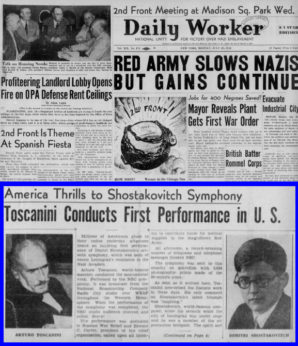
When the author speaks of President Roosevelt’s death in April 1945, he focuses on the musical response that afternoon (or evening? a paragraph later) at Carnegie Hall, Serge Koussevitzky conducting the Boston Symphony. The program included movements from Shostakovich’s Eighth Symphony and Beethoven’s Eroica Symphony, along with the “Star-Spangled Banner” and the New York premiere of Randall Thompson’s choral setting of Thomas Jefferson texts, The Testament of Freedom. This the the first mention in the book (and the last, I believe) of any American composition written to express a programmatic point of view, and this is supposed to be a book about “Classical Music in America.”
Another piece he might have mentioned, which was played extensively on the radio in the days following FDR’s death, is composer Earl Robinson’s cantata The Lonesome Train, about the Lincoln funeral train that wended its way from Washington to Springfield, Illinois, fittingly aligning FDR with the Civil War president. Another wartime piece by an American composer is Samuel Barber’s 1940 choral A Stopwatch and an Ordnance Map. Yet another is in many critics’ view the single greatest piece of wartime music by an American composer, Marc Blitzstein’s hour-long cantata for male voices, the Airborne Symphony, based on his experiences as an enlisted soldier based in England as a cultural worker. All unmentioned. Earl Robinson is not named at all, even though his Ballad for Americans (lyrics by John Latouche), perhaps (alongside his song with Lewis Allen, “The House I Live In”) the most significant expression of the Popular Front in music, was performed by hundreds of choruses around the country in those years. Blitzstein is mentioned twice, once for his appraisal of the Toscanini film Hymn of the Nations and again incidentally as a co-founder of the American-Soviet Music Society (which Rosenberg refers to by inference but not specifically by name), but never is he identified as the composer of significant political milestones in the evolution of American opera such as The Cradle Will Rock, No for an Answer, Regina, and the Sacco and Vanzetti opera he left incomplete at the time of his death in 1964. These few examples show what I mean when I criticize this book for its extreme Eurocentric focus.
Confronting Communism
The main events of this final section of the book focus on the controversial 1949 Cultural and Scientific Conference for World Peace held at New York’s Waldorf Hotel, and the 1950s and ’60s European concert tours by various American orchestras sponsored in part by the U.S. government and in part by private capital such as the Ford Motor Company. Rosenberg introduces this section by underlining how the new Cold War would transform life on each side of the divide, affecting, among others, “the lives of women, gays and lesbians, and African-Americans.” It’s an incongruous formulation, because none of these particular groups has been mentioned before, nor would they be again.
In one respect he is unfailingly politically correct when he quotes contemporary sources and repetitiously (half a dozen times) points to the “gendered” language of the day (once would have sufficed, in his introduction, perhaps), without also pointing out the ubiquitous “gendered” discrimination against women in the classical music field—as in most other fields, of course. If there were any female orchestra players at all in the American orchestras he discusses, he makes no mention of them. Yet in many fields (though I’m not sure about music in those days), the socialist countries made real and successful efforts at opening previously closed professions to women, far more than in the U.S.
As I said, the above citation is Rosenberg’s only, isolated mention of LGBTQ issues. Yet the book jacket features photographs of pianist Van Cliburn and conductor-composer Leonard Bernstein, both of whom are extensively discussed. In addition, composer Aaron Copland is given a long passage about his speech at the Waldorf (alongside invited Soviet composer Shostakovich), and his HUAC testimony. Curiously, Rosenberg fails to mention that all three of these Americans were gay, to varying degrees of openness, of course, considering the age. Despite any claims for Western democracy, the U.S., as well as other democracies, routinely arrested, fined, publicly shamed and imprisoned gay men for sexual “crimes,” including the American composer Henry Cowell. The same happened in the Kaiser’s Germany, Hitler’s Germany, and Stalin’s USSR and in other socialist nations. At the same time, men (and women, too, although lesbians were generally considered less threatening to established systems) who were gay and highly accomplished, such as these three individuals, were afforded some slack as artists who, in this context, were useful ambassadors of Western capitalist values. If Rosenberg were at all serious about mentioning “gays and lesbians,” this could have been a fruitful exploration of a form of discrimination common to almost all societies, and perhaps the lifting up of more-or-less known homosexuals to prominence. In the USSR and other socialist lands, too, oppression on LGBTQ grounds was also spotty: Those regimes had similar habits of looking the other way when politically convenient.
As regards African Americans, also mentioned in that brief passage, Rosenberg pays little attention to race and racism in the “democracies,” not to mention their colonies, although it certainly has a place in any discussion of classical music. Not only were musicians of color excluded from earning positions in the orchestra and on stage, but works by composers of color were seldom played. If certain jazz elements entered classical music, notably in concert music by Gershwin, Copland, Bernstein and many others, this would have been worthy of some discussion—and also how this music impressed European and socialist audiences on orchestra tours in places where jazz was severely discouraged. The State Department also sent Black jazz artists on tour to Europe as part of the Cold War offensive, to show how “free” America was, which could have been mentioned. The history of jazz is replete with many African-American artists who, discriminated against at home, found refuge and careers in Europe.
Meanwhile, in the Soviet Union, every single ethnic republic and autonomous region in the USSR had its own musical conservatories and performing ensembles, they nurtured artists and composers in their own language and traditions, and their leading talents became known throughout the whole country and in many cases, the world.
The Soviet system was very far from perfect, and I do not wish to appear as though I am making excuses for many horrible crimes and abuses which set back the socialist idea for generations. Yet some sober balance must be struck.
Two essential weaknesses in Cold War history
In this latter portion of the book, Rosenberg shares in the widespread failing, in a great deal of writing about the Cold War, to recognize two essential facts. First, the absence in most places (exceptions of Germany, Czechoslovakia, maybe Poland for a time, and maybe briefly the Baltic Republics during their interregnum of independence in the 1920s and ’30s) of deeply embedded democratic traditions; in fact, just the opposite—despotic monarchies, backward, almost feudal economies, weak parliaments dominated by landowners and manufacturers. And second, the fact that these countries had just emerged from a tragic invasion, occupation and a holocaust of anti-Semitism and anti-Slavism, war, siege, hunger, mass death (25 million in the USSR alone) and physical destruction on a scale of suffering and loss that classical music-loving Americans on the home front could barely even begin to imagine. Think Dresden, Warsaw, Leningrad, and many other places.
By 1949, at the time of the Waldorf Conference, those countries were still digging themselves out of the rubble, while in Western Europe the Marshall Plan went into effect to help steer those countries away from the Communist parties which had played so critical a role in the wartime anti-fascist Resistance. “De-Nazification” proceeded apace in West Germany, so that by the mid-1950s a large percentage of the highest positions in the diplomatic corps, politics, industry, education, the military, and many other fields were once again held by the very same persons who had been leading Nazis. The West continued to support colonialism, continuing fascism (in Spain and Portugal, for example), apartheid in South Africa. And in 1953 a tainted court convicted Julius and Ethel Rosenberg, who were electrocuted after a kangaroo conspiracy trial (never mentioned here) with patently anti-Semitic overtones.
Leonard Bernstein, who led a ten-week New York Philharmonic tour to Europe and the USSR in 1959, was the first American-born and -trained conductor of a major symphony orchestra, a fact whose importance Rosenberg doesn’t seem to recognize. It is so ironic—but goes totally unremarked upon—that in the effort to showcase American cultural mastery on a series of international tours, to demonstrate that America was about more than refrigerators and cars, all the other touring orchestra conductors were non-American-born.
If in the late 1940s, in the aftermath of the two allies’ wartime partnership, the American-Soviet Music Society declared, in Serge Koussevitzky’s words, “Let art help forge peace and unity,” one of its members, Lenard Bernstein, enjoyed the opportunity to express this ideal, albeit under corporate and official U.S. sponsorship, in Moscow and Leningrad with his New York Philharmonic. Rosenberg might have recalled that two years previously, his West Side Story played on Broadway: “Somewhere/There’s a place for us/Somewhere a place for us/Peace and quiet and open air/We’ll find a new way of living/We’ll find a way of forgiving….” Despite having officially made his peace with the blacklisters with some wrenching compromises, Bernstein nevertheless remained true overall to his desire for peaceful relations between peoples living under different social systems. Thirty years later, in 1989, on Christmas Day, Bernstein brought together musicians from both East and West Berlin, weeks after the fall of the Wall, for a historic performance of Beethoven’s Ninth Symphony, in which he substituted the word “Freiheit” (freedom) for “Freude” (joy), a milestone Cold War musical event which strangely also goes unmentioned by Rosenberg.
Rosenberg cites numerous sources critical of Soviet control over the arts, deemed necessary by the state if it was to keep pernicious free-market ideas out. He gives ample space to critics of Shostakovich at the Waldorf. On the U.S. side, he does mention the State Department’s denial of passports to left-wing Americans (finally overturned by the Supreme Court in 1958), which limited American musicians’ access to a livelihood. (In that context he might have brought in the name of Paul Robeson, who merits only one incidental reference from early in the WWII period.) He does say that several foreign delegates to the Waldorf Conference were politically barred from the U.S. And he does go into the then-censored Copland HUAC testimony at some length. But inexplicably he fails to mention that private-enterprise America had other ways to intimidate and punish people and ideas: The book Red Channels listed artists in film, TV, radio, and the stage. If anyone’s questionable résumé appeared there, including several leading composers, they were immediately blacklisted. Surely that would have been worth writing about!
Nor does Rosenberg write about the frequent protests and boycotts against Soviet artists, including singers and dance companies, that bedeviled the courageous (but unmentioned) producer Sol Hurok for years as he tried to bridge the cultural gap between the systems. These increased geometrically once the movement took off to allow Soviet Jews the right to emigrate if they chose, or to freely practice their religion if they preferred to remain at home. These movements surely were the latter-day equivalent of the anti-German agitation he writes about at such length earlier in the book.
Stylistically, Rosenberg has an unfortunate tendency toward deadly prolixity. On every topic—the hiring or the dismissal of an artist because of their nationality or political views, or the performance of works by this or that composer—he’ll quote from the internal organizational archival holdings, such as memos and letters from conductors, administrators, and board members, and from journalists, writers of letters to newspapers, politicians, music teachers, even school children, including reactions from several cities. A shrewder editor at Norton would have cut out at least 20% of the book, thus leaving more room, were Rosenberg so inclined, to explore many of the missing pieces of the story he proposed to tell. By concentrating his research on a select few tall trees and their fate, he never quite fathoms the depths of the forest.
And just how selective was the author in his choice of quotes? For example, when writing of the foreign tours, he faithfully regurgitates all the received clichés about life under socialism. He cites the advance guides orchestra players received as to what they should expect to find there, and how they should engage with people on the street (you are unofficial American ambassadors), and inundates the reader with press and critical responses to the tours. Yet not once does he cite a single positive word about what any American experienced there (other than hearing hysterically enthusiastic applause for the music). Not a single quote from a musician even about the incomparable Russian bread! Not to mention any appreciative observations about Soviet musical training and the ballet, or the quality of any performances they may have attended. No compliments either for the elegant, pristine Moscow Metro: Surely a crew of sassy New Yorkers must have taken note!
In the end, Rosenberg has to conclude, quite candidly, “the symphony tours neither enhanced global cooperation nor diminished international tensions.” Furthermore, “… there was something unsavory about a policy that marshaled the country’s most esteemed musical institutions and deployed them overseas to participate in a fearsome and destructive conflict that was responsible for spreading so much misery across the world.”
Rosenberg’s endnotes take up 74 pages, attesting to his prodigious research, even as he omits so much from his purview. Although there is truly a great deal here of real historical significance, and exhaustively covered, this is a book making a few strong points about American prejudices and provincialism, but lacking in the wider vision that would make it a great and seminal model of scholarship.
One simply cannot escape the tight fetters the author has placed on his own work, and his innate, naïve confidence in American superiority and exceptionalism. He can wax somewhat self-critical in long historical retrospect about the excesses of our misplaced patriotism more than a century ago, with concertgoers’ insistence on orchestras playing “The Star-Spangled Banner” alongside their Tchaikovsky, Sibelius, and Brahms, but as to our own domestic problems and our militarist adventures, for the most part unnamed (I am thinking Guatemala, Dominican Republic, Chile, Brazil, Iran, Vietnam, Cambodia, Afghanistan, Congo, Nicaragua, I could go on), he can only timidly and obliquely refer to “the growing assertiveness of the United States on the international stage…its determination to expand its global influence.”
I dedicate this review to my late brother-in-law Dr. Neil Howard Shapiro (1950-2020), of Greenwich, Conn. He died on March 26 at the age of 70. Neil and my sister Ilse visited Los Angeles in January and accompanied me to performances by the Pacific Opera Project (Jan. 25) and the Los Angeles Master Chorale (Jan. 26). They presented me with a signed copy of this book, knowing it would be of interest to me. It was the last time I saw him in person. For over forty years we always shared a love of open-minded, honest, respectful opinion and criticism, whether about politics, music, religion or Medicare for All.
Dangerous Melodies: Classical Music in America from the Great War through the Cold War
By Jonathan Rosenberg
New York: W.W. Norton, 2020
510 pages, $39.95
ISBN 978-0-393-60842-7

MOST POPULAR TODAY

High Court essentially bans demonstrations, freedom of assembly in Deep South

UN warns that Israel is still blocking humanitarian aid to Gaza


Resource wars rage in eastern Congo, but U.S. capitalism only sees investment opportunity

U.S. imperialism’s ‘ironclad’ support for Israel increases fascist danger at home




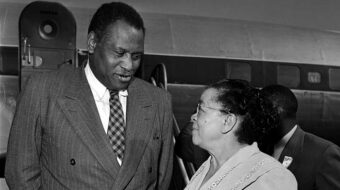

Comments